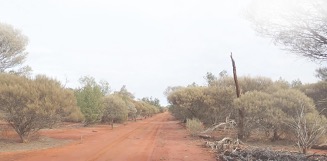Miramar Resources Limited’s (ASX:M2R) ongoing review of historical data within the Company’s 100%-owned Bangemall Projects in Western Australia has outlined several new targets, including a diamondiferous lamproite within the “Blue Bar” Prospect.
Executive Chairman, Allan Kelly, said the identification of multiple new targets underscored the highly prospective but underexplored nature of the Company’s strategic 2,000 square kilometre Bangemall landholding.
“Proterozoic mobile belts can host many different deposit types, including diamonds,” he said.
“The Capricorn Orogen is vastly underexplored compared to other mobile belts within Australia and, as a result, we continue to identify numerous highly prospective targets which we look forward to progressing once the relevant tenements are granted,” he added.
Blue Bar diamond occurrence
An ongoing review of historical data for the Blue Bar prospect has located a report identifying a cluster of lamproites, including one which reportedly contained 27 microdiamonds.
The diamondiferous lamproite was described as “365m across”, “intruding through dolerite and dolomite” and consisting mostly of “fine grained olivine lamproite with large xenoliths of mantle derived material”. The other diatremes are described as “leucite olivine lamproite.”
Compared with kimberlites, which are restricted to stable Archaean cratons, lamproites are mostly only observed in Proterozoic mobile belts, like WA’s Capricorn Orogen.
According to the historical report, several 40kg samples were processed via wet sieving and concentrated, using both gravity and heavy liquids, before microscopic examination of the heavy mineral concentrate.
The process apparently extracted multiple diamond indicator minerals, including various garnets (including G10’s), picro-ilmenite and chrome diopside, along with the 27 microdiamonds, whilst gold and platinoid grains were also recovered, from samples related to the adjacent dolerite sill.
Minimal information about the sampling locations was included in the report, but sketch maps showed the locations of the diatremes in relation to topographic features. Magnetic data appears to highlight the diamondiferous lamproite and, potentially, another unmapped diatreme.
No further work was completed on the tenement, which was subsequently surrendered in 1998.
Miramar plans to conduct a reconnaissance field trip to confirm the location of the reported diatremes and conduct check sampling of the diamondiferous diatreme and the additional circular magnetic anomaly.
Blue Bar Ni-Cu-PGE potential
The Company previously reported that historic data had revealed strongly anomalous Ni and Cu results from rock chips, stream sediments and soil samples within the Blue Bar Prospect, including a cluster of rock chip samples apparently associated with a younger dolerite dyke of the Mundine Well suite.
One rock chip sample, CAPR0428, returned 0.3% Ni, 0.1% Cu and 0.8% Co, which is a similar tenor to outcropping Ni-Cu-PGE mineralisation discovered by Dreadnought Resources within the “Money Intrusion”, also interpreted to be part of the Mundine Well suite. No PGE assays were reported for these samples.
The NE-trending dolerite dyke has minimal sampling over the interpreted 6.4km of strike within Miramar’s tenements and several other (potential) Mundine Well dykes are also seen within the tenement.
Once the relevant tenements are granted, the Company will conduct mapping, sampling and/or geophysics over this high priority Ni-Cu-PGE target.
Regional Uranium Anomalism
A review of regional radiometric data has revealed a very large and high amplitude uranium anomaly that stretches over at least 100km of strike within several of Miramar’s tenement applications.
The regional scale uranium anomaly is located towards the northern edge of the Edmund Basin, at the contact with the older Ashburton Basin rocks, and apparently associated with the Jillawarra formation sediments where they have been intruded by later dolerite sills of the Kulkatharra suite.
For further information please visit: https://www.miramarresources.com.au/












